![]()
![]()
![]()
Use LEFT and RIGHT arrow keys to navigate between flashcards;
Use UP and DOWN arrow keys to flip the card;
H to show hint;
A reads text to speech;
16 Cards in this Set
- Front
- Back
|
chivalry |
medieval knightly system with its religious, moral, and social code; think courage, honor, courtesy, justice, and readiness to help the weak |
|
|
doctrine of discovery |
concept of public international law expounded by the US supreme court in a series of decisions, most notably Johnson v M'Intosh in 1823; established spiritual, political, and legal justification for colonization and seizure of land not inhabited by Christians; chief justice John Marshall's explanation |
|
|
feathered serpent |
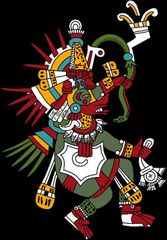
in aztec culture, Quetzalcoatl was, a feathered serpent; a creator deity having contributed essentially to creation of mankind; major cult center is the temple of the feathered serpent |
|
|
feudalism |
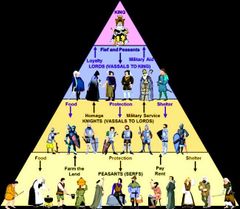
dominant social system in medieval europe, in which nobility held lands from the crown in exchange for military service, and vassals were in turn tenants of the nobles, while peasants (villeins or serfs) were obliged to live on their lord's land and give him homage, labor, and share of produce, notionally exchanged for military protection |
|
|
huitzilopochtli |
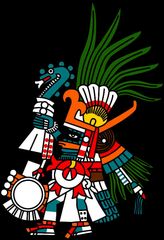
also spelled uitzilopochtli; aka xiuhpilli ("turquoise prince") and totec ("our lord"), aztec sun and war god, one of two principal deities of aztec religion, often represented in art as either a hummingbird or an eagle; animal disguise, or his nagual, was eagle |
|
|
lake texcoco |
natural lake within "anahuac", valley of mexico, and is best known for being place where aztecs built the city of tenochtitlan, which was located on an island within the lake; located in central mexico |
|
|
mesoamerican counting system |
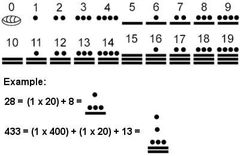
mayan and other mesoamerican cultures used vigesimal number system based on base 20 (~ base 5) , probably originally developed from counting on fingers and toes; numerials consisted of only 3 symbols: zero, represented as shell shape; one, as dot; and five, as bar |
|
|
mictlan |
underworld of aztec mythology; most who died would travel to mictlan, although other possibilities exist; consists of 9 distinct levels; takes four years to complete 1-9, but the dead are aided by psychopomp xolotl |
|
|
olmec |
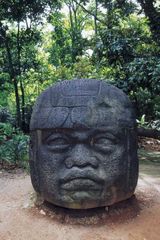
"people from land of rubber"; referred to as mother culture, cultura madre; inhabited lowland regions of vera cruz along mexico's eastcoast; innovations include: calendar, zero concept, and writing system |
|
|
paul of tarsus |
also called paul the apostle, saint paul, and saul of tarsus; was Christian apostle who spread teachings of jesus in first-century world |
|
|
quetzalcoatl |
also called feathered serpent; one of the major deities of ancient Mexican pantheon; known as inventor of books and calendar, giver or maize to mankind, and sometimes the symbol of death and resurrection; patron of the priests and title of twin aztec high priests |
|
|
reconquista |
english reconquest, in medieval Spain and Portugal, series of campaigns by Christian states to recapture territory from Muslims (moors), who had occupied most of the Iberian peninsula in early 8th century; c. 801- c. 1492 major events: battle of alarcos, battle of las navas de tolosa, battle of rio salado, siege of toledo key ppl: alfonso vi, alfonso vii, el cid, ferdinand ii, isabella i |
|
|
roman empire |
post-republican period of ancient Rome; as a polity (organized society) it included large territorial holdings around Mediterranean sea in europe, north africa, and western asia ruled by emperors |
|
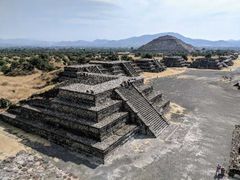
tenochtitlan |
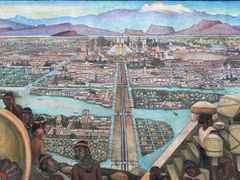
capital of mexican civilization of mexica people, founded in 1325 |
|
|
triple alliance |

also known as aztec empire; was alliance of three Nahua altepetl city-states: mexico-tenochtitlan, tetzcoxo, and tlacopan |
|
|
zapotecos |
indigenous pre-Columbian civilization that flourished in valley of Oaxaca in mesoamerica; originated at least 2,500 years ago; call themselves "be'ena'Za" meaning the cloud people; polytheistic with two most important deities being cocijo (rain god) and coquihani (god of light) |

